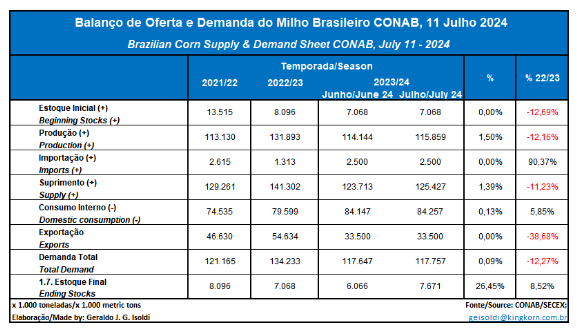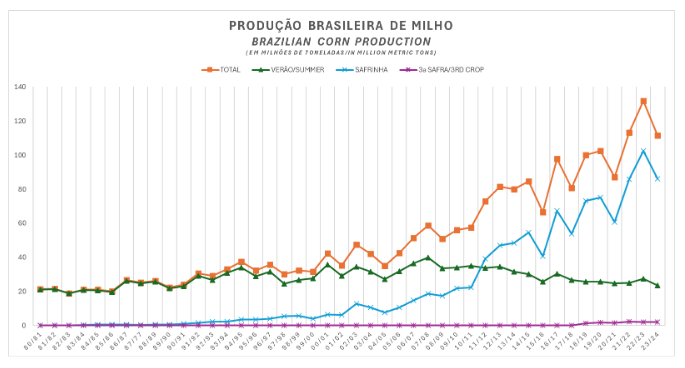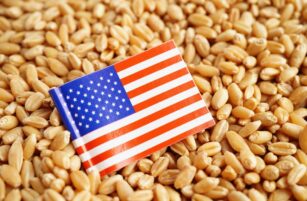Insight Focus
Brazil could produce 120m tonnes of corn this year. This is despite the challenges imposed by the effects of El Niño at the beginning of the season. The harvest has already progressed at a record pace.
Conab Raises Estimates To 115.86 Million Metric Tons
CONAB has increased projections for the corn crop in its July report for the third consecutive time, reaching 115.86 mmt. This follows a series of uncertainties caused by the drought that affected much of the producing areas at the beginning of the season, leading CONAB to successive cuts in the total corn crop (starting from 119.84 mmt in its initial estimate to a minimum of 110.96 mmt in the last March report).

Brazilian Corn Season is Divided into 3 Crops
1st Crop or Summer Crop: with the southern states being the first to plant in September alongside the soybean crop started at the same time. The Summer Crop accounts for over 20% of the total crop and has the state of Rio Grande do Sul as its main supplier;
2nd Crop, the famous Safrinha, is responsible for 78% of the total production, with the state of Mato Grosso being the main producer, planting corn only in this crop. The sowing period starts in January with the harvest potentially lasting until August.
3rd Crop, although responsible for only 2% of the total production, around 2.4 mmt, has gained importance in recent years. It is carried out only in some states in the North and Northeast regions, with planting starting in April and harvesting finishing in December.

The Safrinha crop, in addition to being the most significant, is also the riskiest since its planting and development period coincides with the end of the rainy season. Therefore, it is essential for reducing climate risk that both the summer crop and the preceding soybean crop are carried out within an adequate window without major delays.
A Turbulent Season
Excessive rain events in the southern region (Rio Grande do Sul, Santa Catarina, and Paraná states) and drought in important states such as Mato Grosso do Sul, northern Paraná, Goiás, and mainly Mato Grosso raised doubts about the duration of the soybean and summer corn cycles, leading not only CONAB but also many private consultancies to reduce their projections for both crops, with numbers reaching 135 mmt for soybeans and 110 million tons for corn.
With the harvests of the first corn crop and soybeans completed, it was found that despite the challenges, the country is expected to have the 2nd largest soybean crop in history, projected in July at 147.34 mmt by CONAB and 153 mmt by the USDA, while the same climate that caused panic and reduced yields also allowed for a rapid advancement in the safrinha cycle, as well as the fastest harvest of all time, which according to the private consultancy AgRural was 83% completed in the Central-South region by July 18.
More Positive Adjustments Expected
With only two more reports for the 23/24 season to be published, CONAB’s numbers for the total corn crop should undergo new positive adjustments, potentially approaching 120 mmt, below the record of the last crop of 131.9 million tons but above the 21/22 crop when Brazil produced 113.13 million tons, thus consolidating itself like soybeans as the 2nd largest crop in history.

Source: CONAB
Made by: Geraldo J. G. Isoldi













